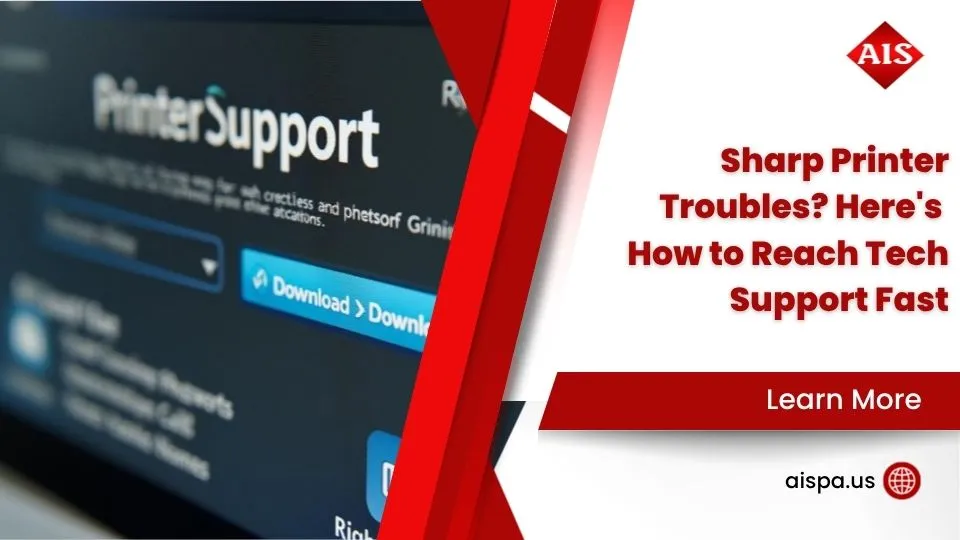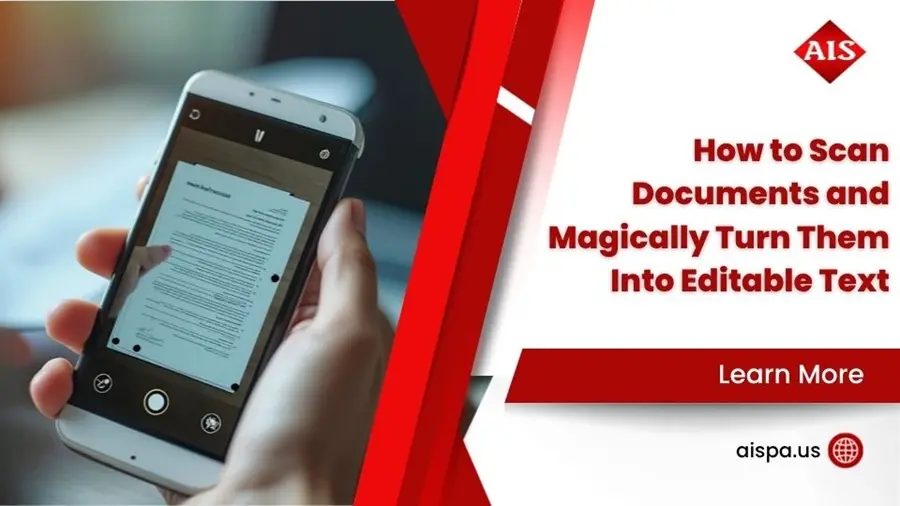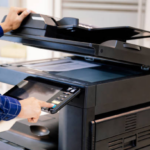Hard Paper for Printing Cards That Stand Out
Hard paper for printing cards refers to thicker, more durable paper stocks that give printed cards their professional feel and lasting quality. If you’re looking for a quick answer to what paper to use for cards, here’s what you need to know:
| Paper Type | Weight Range | Best For | Features |
|---|---|---|---|
| Cardstock | 80-110 lb (216-300 gsm) | Greeting cards, invitations | Versatile, widely available |
| Cover Stock | 12 pt (approx. 270 gsm) | Business cards, postcards | Professional finish, good durability |
| Linen Finish | 280-300 gsm | Game cards, premium invitations | Textured feel, shuffles well |
| C1S (Coated One Side) | 12 pt | Greeting cards with writing inside | Glossy exterior, writable interior |
Think back to the last time you received a flimsy card that bent easily versus a sturdy, professional card that felt substantial in your hand. That difference? It’s all about the paper.
Hard paper for printing cards makes the difference between amateur-looking printouts and professional-quality cards that leave a lasting impression. Whether you’re creating business cards to network at Philadelphia trade shows, designing custom invitations for a company event, or printing game cards for an office team-building activity, choosing the right paper stock is crucial.
“This is the first time I have ever been impressed with paper,” one reviewer noted about using proper cardstock for their print projects. That sentiment captures exactly why paper selection matters – it’s the foundation of your printed materials.
The most common types of hard paper for card printing include cardstock (also called cover stock), index paper, and specialty papers with various finishes like matte, glossy, or linen texture. Each offers different benefits depending on your specific needs, printer capabilities, and budget.
For office managers looking to create professional cards in-house, understanding paper weight (measured in pounds, points, or GSM) and finish options will help you make cost-effective choices while still achieving impressive results.

Understanding Hard Paper Basics
Ever picked up a greeting card and instantly felt its quality before reading a single word? That’s the magic of hard paper for printing cards at work! Let’s explain these sturdier paper options that give your printed creations their professional feel.
Think of cardstock as the heavyweight champion of the paper world. While regular printer paper bends at the slightest touch, cardstock stands its ground. This family of thicker papers includes several members:
- Card stock: The general term for thicker paper (65-110lb or 176-300gsm)
- Cover stock: Heavy-duty paper perfect for business cards and book covers
- Index paper: That sturdy, uncoated stock used for recipe cards and flash cards
- Specialty papers: The fancy cousins with textured finishes like linen or metallic surfaces
Don’t worry if these terms sometimes overlap in everyday conversation – what really matters is finding paper with the right properties for your specific project.
Why “hard” paper matters for cards
There’s a reason we don’t print greeting cards on regular copy paper. The rigidity of hard paper for printing cards serves several crucial purposes:
First, it provides the structural integrity cards need to withstand handling without flopping over or creasing accidentally. Second, there’s that unmistakable tactile experience – when someone holds your card, that satisfying weight silently communicates quality. Third, proper cardstock allows clean folding without unsightly cracks along the crease. Finally, thicker papers simply last longer, ensuring your thoughtful message doesn’t deteriorate quickly.
As one card-making enthusiast noted, “Regular cardstock lacks the core layer found in commercial game cards, affecting snap and rigidity.” This insight highlights why understanding paper structure matters—different projects demand different types of sturdiness.
Paper weight units decoded
Paper weight measurements can feel like learning a foreign language at first, but let’s break it down:
GSM (grams per square meter) is the most straightforward measurement globally, telling you exactly how much a square meter of that paper weighs. Most cardstock falls between 135-300 GSM.
Pound (lb) weight might seem confusing, but it’s simply the weight of 500 sheets of that paper in a standard size. You’ll often see this expressed as “80lb cover” or “100lb text.”
Points (pt) measure actual thickness, where each point equals 0.001 inches. So 10pt stock is 0.010 inches thick.
For perspective, your everyday office copy paper is typically just 20lb text weight (75gsm), while professional business cards often use 100lb cover (270gsm) or 12pt stock.
Here’s a quick conversion guide to help steer between systems: 80lb cover ≈ 216 GSM ≈ 8pt 100lb cover ≈ 270 GSM ≈ 10pt 130lb cover ≈ 352 GSM ≈ 14pt
If you’re creating postcards or mailers, keep in mind that the U.S. Postal Service requires minimum thickness (typically at least 9pt) for automated processing. This ensures your cards won’t get damaged or jammed in their sorting equipment.
At Associated Imaging Solutions, we help Philadelphia businesses steer these paper choices every day, ensuring your printed materials make exactly the right impression. Want to learn more about specific paper types? Check out our guide to Types of Paper for Printing.
Choosing the Right Hard Paper for Printing Cards
Selecting the perfect hard paper for printing cards feels a bit like choosing the right fabric for a suit – it needs to look good, feel right, and stand up to its purpose. Let’s walk through the options together to find your perfect match.
Hard paper for printing cards: weight & thickness sweet spots
Think of paper weight as the backbone of your card. Too flimsy, and it feels cheap; too heavy, and it might not work with your printer or fold properly.
For greeting cards and invitations, the sweet spot tends to be 80-100lb cover (216-270 GSM). This weight offers that satisfying feel in hand while still folding cleanly without cracking. Many card creators swear by 12pt C1S (coated one side) as their go-to choice – it’s the Goldilocks of cardstock, not too heavy, not too light.
Business cards demand a bit more substance. After all, they’re your handshake in paper form! Most professionals opt for 100-130lb cover (270-352 GSM) or 14-16pt stock. When someone pulls your card from their wallet weeks later, you want it to have maintained its crisp, professional appearance.
For game enthusiasts, 280-300 GSM cardstock with linen finish most closely mimics commercial playing cards. As one game designer shared with me, “The right paper makes all the difference in how cards shuffle and feel during gameplay – linen finish in that 280-300gsm range gives you that authentic snap.”
Postcards need to survive the postal system’s machinery, so aim for 12-14pt (approximately 270-300 GSM) to meet USPS requirements while ensuring your message arrives intact.
Heavier isn’t always better! Cards that are too thick can jam printers and resist folding, turning your creative project into a frustrating exercise.
Coated vs uncoated choices for card projects
The coating on your cardstock is like choosing between matte and glossy paint for your walls – it dramatically changes both the look and function of your cards.
Coated papers have that smooth, sealed surface that makes colors pop. If you’re showcasing vibrant photos or colorful designs, coated stock will make them shine – literally! You’ve got three main options:
Glossy finishes offer high shine that makes colors leap off the page. Semi-gloss provides a more subdued sheen while still enhancing color vibrancy. Matte coating gives you a smooth surface without the reflective quality, perfect for reducing glare and fingerprints.
Uncoated papers feel more natural and organic. They absorb ink rather than letting it sit on top, resulting in slightly more muted colors but a wonderfully tactile experience. They’re also much easier to write on with regular pens – no more struggling to find a pen that works on glossy surfaces!
For greeting cards, C1S (coated one side) paper offers the best of both worlds. Your printed design looks vibrant and professional on the glossy exterior, while the uncoated interior welcomes handwritten messages. As one small business owner told me, “Two-sided gloss looks great until you try to write a message inside – then it becomes a smudgy mess.”
Textures that lift your design
Texture adds personality to your cards, creating a tactile experience that engages more than just the eyes.

Linen texture features that classic crosshatch pattern that feels sophisticated under your fingertips. It’s particularly popular for business cards, wedding invitations, and playing cards. The subtle texture adds interest without competing with your design.
Felt finish offers a soft, slightly fuzzy surface that feels warm and inviting – perfect for holiday cards or heartfelt messages. Laid paper mimics handmade paper with horizontal lines that add an artisanal quality to your cards.
For designs with fine details or photography, smooth finishes ensure nothing interferes with image clarity. And embossed patterns add dimensional interest that literally rises above the surface.
Match your texture to your message. A formal wedding invitation benefits from the traditional elegance of linen, while a child’s birthday card might be better suited to smooth stock that showcases bright colors and playful images.
Game card creators particularly love linen finish. As one forum user explained, “Linen finish gives cards that perfect shuffle feel – they glide past each other without sticking but still have enough grip to handle easily.”
| Paper Weight | Finish Type | Best Used For | Special Considerations |
|---|---|---|---|
| 80lb (216gsm) | Matte | General greeting cards, Flyers | Good for folding, Economical |
| 100lb (270gsm) | Semi-gloss | Premium greeting cards, Invitations | Vibrant colors, Professional look |
| 110lb (300gsm) | Linen | Business cards, Game cards | Excellent texture, Shuffles well |
| 12pt C1S | Glossy front, Uncoated back | Greeting cards with messages | Writable inside, Professional outside |
| 14-16pt | Smooth | Business cards, Postcards | Maximum durability, Premium feel |
| 65-80lb (176-216gsm) | Uncoated | DIY cards, Craft projects | Takes stamping well, Easy to cut |
At Associated Imaging Solutions, we’ve helped countless Philadelphia businesses steer these choices for their in-house card printing needs. The right paper transforms a simple printed message into something people want to keep, share, and remember. For more detailed information about various paper types, check out our guide on Types of Hard Paper for Printing.
Printing Techniques & Best Practices
Successfully printing on hard paper for printing cards isn’t just about having the right paper—it’s about knowing how to work with it. Think of it like baking: even with premium ingredients, you need the right techniques to get great results.
Hard paper for printing cards at home vs pro service
There’s something satisfying about creating cards right at your desk. Home printing gives you complete control and immediate results—perfect when inspiration strikes at midnight before an important event. For small batches of 5-10 cards, it’s usually more economical too.
“I love being able to make last-minute adjustments to my designs,” shares one of our Pennsylvania clients who prints custom thank-you cards for her small business. “Sometimes I’ll print just one card to test a new design before committing.”
However, home printing comes with limitations. Most desktop printers struggle with paper heavier than 80-100lb cover stock. You might find yourself manually feeding sheets one at a time, crossing your fingers that they don’t jam. And you’re typically limited to standard letter-size formats.
Professional printing services (like what we offer at Associated Imaging Solutions) shine when you need consistent quality across larger quantities. While a batch of 25 home-printed cards might cost you $0.50-$1.00 per card in materials alone, professional printing might run $1.50-$3.00 per card for that same small quantity. But the professional price drops significantly as your quantity increases, while your per-card cost at home remains relatively stable.
Many of our Philadelphia clients find the sweet spot with a hybrid approach—using professional services for their standard marketing materials while keeping in-house capabilities for quick, personalized needs.
Ensuring color accuracy on hard paper for printing cards
Ever printed what looked perfect on screen only to find the colors look completely different on paper? Paper type dramatically affects how your colors appear in the final product.

Uncoated papers absorb more ink, making colors appear softer and more muted. Coated stocks keep ink sitting on the surface, creating more vibrant, saturated colors. Papers with higher brightness ratings (92+) will generally give you the most accurate color reproduction.
“Use the ‘bright white’ or ‘glossy photo paper’ setting at highest quality, rather than the photo-heavy setting,” advises one of our regular customers who creates custom holiday cards. This prevents ink from feathering on glossy cover stock.
Always create a test print before committing to your full run, especially when trying a new paper stock. And remember that colors can shift slightly as they dry, particularly on coated papers—give them 24 hours before making final judgments.
Double-sided perfection without jams
Double-sided card printing can be tricky with thicker papers, but a few simple techniques can help you achieve professional results.
If your printer has automatic duplexing, start by testing your alignment using regular copy paper. Always include “bleed” in your design (extra image area beyond where you’ll trim) to forgive slight misalignments. Reduce the number of sheets in your paper tray to prevent multiple-sheet feeds, and give the first side ample time to dry before printing the reverse.
For printers without automatic duplexing, you have several creative options:
The Gatefold Method involves printing your design so both sides appear on one sheet, which you then fold and glue together. This works beautifully for greeting cards.
Manual duplex printing means printing all sheets on one side first, then carefully reinserting them to print the reverse. Mark your paper stack with a pencil to help you reinsert correctly.
The Sandwich Method is perfect for the thickest stocks—print fronts and backs separately, then use spray adhesive to bond them together for ultra-premium cards.
“Test alignment on cheap copy paper first and rely on generous bleeds to conceal small misalignments,” suggests a client who regularly prints game cards for his team-building workshops. “It saves both paper and frustration.”
At Associated Imaging Solutions, we help businesses throughout Philadelphia and Pennsylvania find the right balance between in-house printing capabilities and professional services, ensuring you always have the right tools for your specific card printing needs.
Troubleshooting & Expert Tips
Even the best hard paper for printing cards can sometimes give you headaches. Don’t worry—we’ve seen it all and have solutions to keep your card projects running smoothly.
When cards won’t feed properly, try this little trick: gently bend the leading edge of your cardstock slightly upward before loading it into the printer. This creates a natural curve that helps the rollers grab the paper more effectively. Whenever possible, use the rear or manual feed tray, which provides a straighter paper path for thicker stocks. For those super-thick premium papers, sometimes the old-fashioned one-sheet-at-a-time method works best. And always fan your stack of paper before loading—it breaks the static bond between sheets that often causes multiple feeds.
Paper curl can ruin even the most beautiful card design. Store your hard paper for printing cards flat in a cool, dry place—humidity is the enemy of perfectly flat paper! If you’ve already got curled paper, gently bend it in the opposite direction of the curl, almost like you’re training it to behave. For stubborn cases, the “book press” method works wonders: place the paper under a stack of heavy books for 24 hours to coax it back to flatness.
“I learned the hard way that glossy cardstock and patience go hand-in-hand,” shared one of our Philadelphia customers. Ink smearing happens most often with coated papers because the ink sits on the surface longer before drying. Give your cards plenty of time to dry—especially in humid weather. You can also adjust your printer settings to use less ink, which reduces drying time. Laser printer users face a different challenge: if toner flakes off your cards, your paper might be too thick for your printer’s fuser to properly melt the toner into the paper. Using the “heavy paper” or “cardstock” setting increases the fuser temperature and usually solves this problem.
For game cards that will see heavy handling (think office team-building activities or client appreciation events), durability matters. A light spray varnish applied in two thin coats creates a protective barrier without making the cards too slippery. Card sleeves offer maximum protection for frequently used cards. And here’s a pro tip: rounded corners resist wear much better than sharp corners—most office supply stores sell corner-rounding punches for a few dollars.
Cost considerations & budgeting
Smart choices about hard paper for printing cards can stretch your printing budget without sacrificing quality.
Buying in bulk almost always saves money—the price per sheet can drop dramatically when purchasing 250 sheets versus 50. Standard sizes (8.5″ x 11″) minimize waste and cost less than specialty sizes. For maximum versatility, invest in multi-purpose weights like 80-100lb cardstock that work well for various projects from greeting cards to presentation covers.
Money-saving hacks we recommend to our Pennsylvania clients:
- Print multiple cards per page and cut them apart afterward
- Choose slightly lighter weights for internal or temporary use
- Watch for clearance sales on specialty papers (seasonal colors often go on sale)
- Reuse test prints as scratch paper or internal documents
- Invest in a paper cutter to maximize sheet usage with precise cuts
“For a few dollars more you can get a heavier cardstock, but this one hits a sweet spot between cost and quality,” noted one reviewer about semi-gloss 80lb cardstock. This middle-ground option delivers professional results without breaking the budget—especially important for small businesses and organizations printing cards in-house.
Eco-friendly hard paper alternatives
Sustainability doesn’t have to mean sacrificing quality when choosing hard paper for printing cards. In fact, many of our clients find that eco-friendly options improve their brand image while delivering excellent results.

When shopping for sustainable paper, look for trusted certifications like FSC (Forest Stewardship Council), which ensures the paper comes from responsibly managed forests. The SFI (Sustainable Forestry Initiative) focuses specifically on North American forests, while PCW (Post-Consumer Waste) percentages tell you how much recycled content is in the paper. Chlorine-Free processing is another eco-friendly feature that avoids harmful bleaching chemicals.
Recycled cardstock has come a long way—today’s options (typically containing 30-100% PCW content) perform beautifully in most printers and take ink just as well as virgin paper. For something truly different, consider tree-free papers made from alternative fibers like cotton, hemp, or bamboo. These renewable resources create distinctive cards with unique textures that stand out from standard options.
Many Philadelphia businesses we work with have found that highlighting their use of sustainable materials on business cards and marketing materials resonates strongly with environmentally conscious clients. While eco-friendly options sometimes cost slightly more upfront, they often provide comparable quality while reducing environmental impact—a worthwhile investment for your brand’s image.
At Associated Imaging Solutions, we’re committed to helping businesses across Pennsylvania make environmentally responsible choices while maintaining professional quality in their printed materials. We can help you find the perfect balance between sustainability, quality, and budget for your next card project.
Frequently Asked Questions about Hard Paper for Printing Cards
What weight of hard paper should I choose for greeting cards?
Finding that perfect weight for greeting cards can feel like a bit of a Goldilocks situation – not too flimsy, not too rigid. For most greeting cards with a single fold, 80-100lb cover stock (216-270 GSM) or 12pt thickness hits that sweet spot nicely. This range gives you cards that stand up to handling while still creating clean, professional-looking folds.
If your design goes heavy on the ink or includes those special touches like glitter or embossing, you’ll want to lean toward the heavier end. For those extra-special cards meant to be kept and displayed (think wedding announcements or milestone celebrations), consider bumping up to 110lb cover (300 GSM).
I love how one of our crafting customers put it: “A cover stock between 10 and 14 point is suitable, but 12 point is truly the sweet spot for greeting cards.” It’s that perfect balance between feeling substantial in your hands without being too stiff to fold nicely.
Can my home printer handle 300 GSM cardstock without jams?
Most standard home inkjet printers can reliably handle up to 80-100lb cover stock (216-270 GSM), especially when you use the rear or manual feed tray. When you start venturing into heavier territory like 110lb (300 GSM), it’s worth checking your printer’s manual first before potentially causing a paper jam headache!
If you’re determined to use heavier hard paper for printing cards at home, here are some friendly tips that have saved many of our Philadelphia customers from printer frustration:
Feed one sheet at a time through the manual feed tray when available. Set your printer to “cardstock” or “heavy paper” mode – this adjusts the feed rollers and ink settings. Try slightly bending the leading edge upward to help those feed rollers grab hold. And whenever possible, look for the straightest paper path through your printer.
As one of our regular customers wisely shared, “I always feed one sheet at a time and sometimes give it a gentle nudge if my printer struggles with the thick stock. Works like a charm!”
How do I prevent color bleed when printing double-sided cards?
Nothing ruins a beautiful card faster than colors bleeding through from one side to the other! This is especially frustrating when you’ve invested in quality hard paper for printing cards. Here’s how to keep your double-sided cards looking crisp and professional:
Paper choice matters enormously here. C1S (coated one side) papers are fantastic for preventing bleed-through while still giving you that writable surface on the back. The coating creates a barrier that keeps ink from seeping through.
Your printer settings can make a huge difference too. Try reducing ink saturation – look for options like “draft mode” or manually dial back the color intensity. Your images will still look vibrant, but with less risk of bleeding through.
Patience pays off! Print one side and give it ample time to dry (at least 30 minutes, but overnight is even better) before printing the reverse. This simple step has rescued countless card projects.
For absolutely critical projects where bleed-through would be disastrous, consider the “sandwich method” – print front and back sides on separate sheets, then use spray adhesive to bond them together. It’s a bit more work but guarantees zero bleed-through.
One of our Philadelphia print shop customers swears by Epson Premium Presentation Matte paper, noting that “it works beautifully with minimal bleed-through if you just give it proper drying time.”
At Associated Imaging Solutions, we’ve helped many Pennsylvania businesses find the perfect balance between paper weight, printer settings, and techniques to create professional-quality cards without the frustration of bleeding or jamming. Sometimes the simplest adjustments make all the difference!
Conclusion
Choosing the right hard paper for printing cards makes all the difference between a card that impresses and one that disappoints. Throughout this guide, we’ve walked through everything from paper weights to printing techniques, giving you the knowledge to create cards that look and feel professional.
Let’s recap what we’ve learned:
The ideal cardstock for most cards falls between 80-110lb cover (216-300 GSM), giving you that perfect balance of durability and usability. For greeting cards specifically, that 12pt C1S (coated one side) paper hits the sweet spot – giving you a glossy, vibrant exterior with a writable interior for personal messages.
Remember how we talked about texture? That linen finish that feels so good between your fingers isn’t just pleasant – it lifts your entire design and creates a memorable tactile experience for the recipient.
Getting the paper right is only half the battle, though. The right printer settings and proper feeding techniques save you from the frustration of paper jams and wasted materials. And for those environmentally conscious, we’ve seen that sustainable paper options deliver excellent results without compromising on quality.
Here at Associated Imaging Solutions, we work with businesses across Pennsylvania who face these printing challenges daily. Our local team understands the specific needs of Philadelphia businesses and organizations throughout the state – from the small accounting firm printing professional business cards to the marketing agency creating custom greeting cards for clients.
We don’t just sell equipment; we provide solutions that help you implement everything you’ve learned in this guide. Whether you need printers that can handle heavier stocks without jamming or managed print services that optimize your paper usage and reduce waste, our approach combines personalized service with advanced technology.
Think about the last truly impressive card you received – chances are, the paper quality played a huge role in your perception before you even read a word. That’s the power of selecting the right hard paper for printing cards. It’s not merely a technical decision; it’s the foundation of your message and your brand’s first physical impression.
Ready to take your card printing to the next level? Our team is here to help with equipment, supplies, and expertise custom to your specific needs. Contact your local Associated Imaging Solutions office today to find how we can support your printing projects with the perfect paper and equipment combination.











